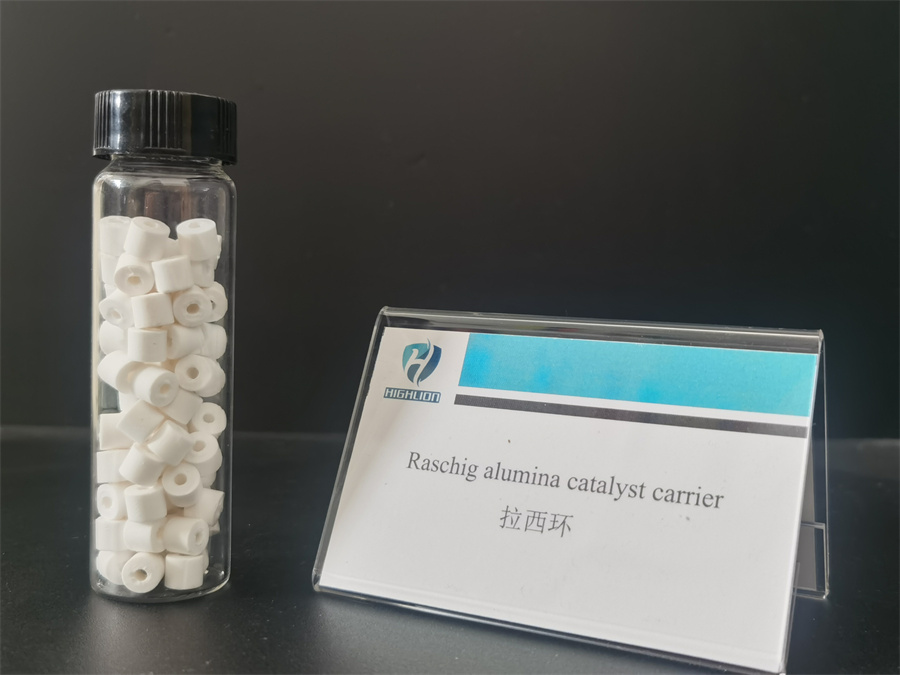Raschig ring shape alumina catalyst support

Raschig ring shape alumina catalyst support is a highly efficient porous material widely used in the chemical catalysis field, playing a key role in various catalytic reactions due to its unique structure and excellent performance.
1. Basic Structure and Shape
– Shape: Raschig rings are classic ring-shaped fillers, typically cylindrical hollow rings. The hollow design increases surface area and reduces pressure drop.
– Material: Made from high-purity γ- or α-alumina (Al₂O₃), processed through forming and sintering to ensure high mechanical strength and thermal stability.
2. Key Characteristics
– High Surface Area: Typically 100–300 m²/g, providing abundant active sites for loading metals (e.g., Pd, Pt, Ni) or acidic/alkaline active components.
– Porous Structure: Controllable pore size distribution (micro-, meso-, or macroporous), influencing reactant diffusion and selectivity.
– Thermal Stability: Withstands high temperatures (up to 1000°C+), suitable for highly exothermic or high-temperature reactions (e.g., hydrocarbon reforming, dehydrogenation).
– Chemical Inertness: Resistant to acid/base corrosion, adaptable to harsh reaction environments (e.g., hydrogenation, oxidation, isomerization).
– Mechanical Strength: Resistant to crushing and abrasion, suitable for fixed-bed or fluidized-bed reactors.
3. Manufacturing Process
1)Raw Material Processing: Precursors such as pseudoboehmite or boehmite are mixed with binders (e.g., nitric acid) and pore-forming agents.
2)Forming: Shaped into Raschig rings via extrusion, or tableting.
3)Calcination: High-temperature sintering (500–1200°C) stabilizes the crystal phase (e.g., γ-Al₂O₃) and pore structure.
4. Applications
– Petrochemicals: Hydrodesulfurization (HDS), catalytic cracking (FCC), olefin isomerization.
5. Advantages
– Optimized geometry reduces bed pressure drop.
– High surface area and porosity enhance catalytic efficiency.
– Suitable for large-scale continuous production.

